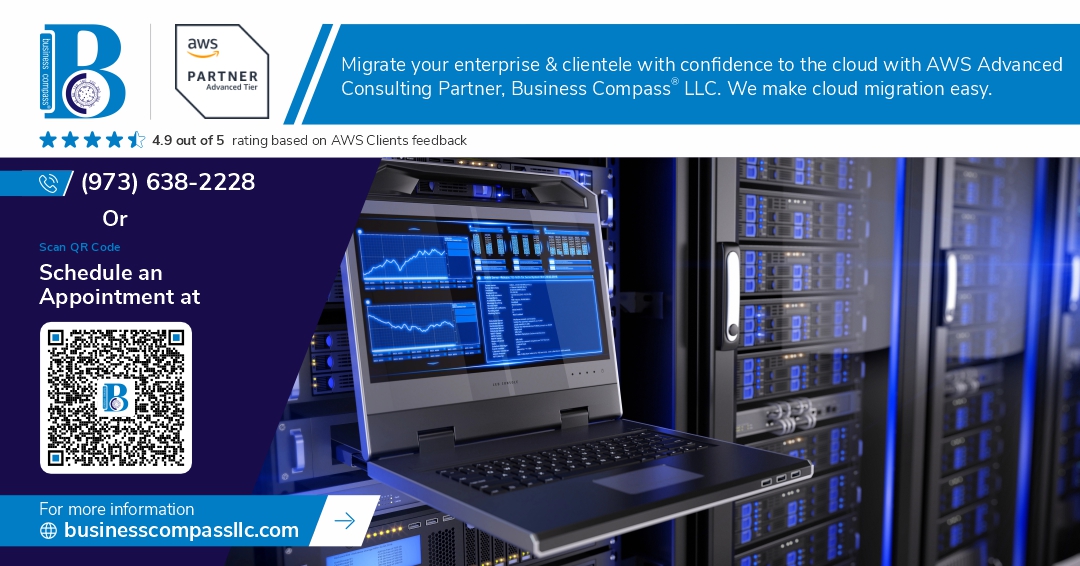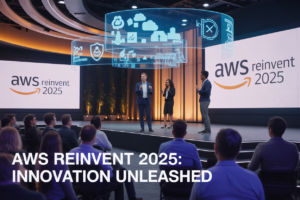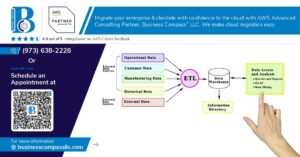This comprehensive Cloud Foundry deployment walkthrough shows you how to deploy an Unsplash MCP Server with server-sent events integration from development to production. This guide targets developers and DevOps engineers who need step-by-step instructions for implementing MCP server architecture on Cloud Foundry’s platform.
You’ll learn the complete Unsplash MCP Server deployment process, starting with building your local development environment and coding the core server implementation. We’ll cover the essential Cloud Foundry application deployment steps, including manifest configuration, service binding, and environment setup for your Unsplash API deployment.
The tutorial also dives deep into SSE integration guide techniques, showing you how to implement real-time data streaming and optimize performance in your Cloud Foundry development environment. By the end, you’ll have a fully functional MCP server implementation running in production with proper monitoring and testing protocols in place.
Understanding the Core Architecture Components
MCP Server fundamentals and data handling capabilities
MCP (Message Control Protocol) servers act as intelligent intermediaries that manage communication between applications and external APIs like Unsplash. These servers excel at handling complex data transformations, implementing robust caching mechanisms, and managing API rate limits seamlessly. The MCP server architecture provides built-in error handling, request queuing, and response formatting capabilities that make integration with image services straightforward. By abstracting the complexity of direct API interactions, MCP servers enable developers to focus on application logic rather than infrastructure concerns. The server’s modular design supports custom plugins and middleware, making it highly adaptable for various deployment scenarios.
Server-Sent Events (SSE) integration benefits for real-time communication
SSE integration transforms static API responses into dynamic, real-time data streams that enhance user experience significantly. Unlike traditional polling mechanisms, SSE maintains persistent connections that push updates instantly when new Unsplash content becomes available. This approach reduces server load by eliminating unnecessary HTTP requests while providing users with immediate feedback on image searches and uploads. The lightweight nature of SSE makes it perfect for bandwidth-conscious environments, delivering structured JSON data efficiently. Real-time notifications about API quota usage, processing status, and content availability keep applications responsive and users informed without manual refreshes.
Cloud Foundry platform advantages for scalable deployment
Cloud Foundry simplifies MCP server deployment through its containerized approach and automatic scaling capabilities. The platform handles load balancing, health monitoring, and zero-downtime deployments without requiring manual infrastructure management. Built-in service binding capabilities make connecting to databases, caching layers, and external APIs like Unsplash straightforward and secure. Cloud Foundry’s multi-tenancy support allows teams to deploy multiple environments efficiently while maintaining isolation and resource optimization. The platform’s rolling updates ensure continuous availability during deployments, making it ideal for production Unsplash MCP server implementations that demand high reliability and performance.
Setting Up Your Development Environment
Installing required dependencies and MCP server packages
Start by creating a new Node.js project and installing the essential MCP server packages. You’ll need @modelcontextprotocol/sdk for core MCP functionality and express for HTTP server capabilities. Install additional dependencies like node-fetch for API calls, cors for cross-origin requests, and dotenv for environment variable management. Run npm init -y followed by npm install @modelcontextprotocol/sdk express node-fetch cors dotenv eventsource to get your foundation ready. These packages form the backbone of your Unsplash MCP server deployment and enable seamless SSE integration.
Configuring Unsplash API credentials and authentication
Head over to the Unsplash Developer portal and create a new application to obtain your API access key. Create a .env file in your project root and add your credentials: UNSPLASH_ACCESS_KEY=your_key_here and UNSPLASH_SECRET_KEY=your_secret_here. Set up rate limiting configurations to respect Unsplash’s API limits of 5,000 requests per hour. Configure your authentication middleware to validate API keys and handle token refresh scenarios. This setup ensures your MCP server implementation can securely communicate with Unsplash’s services while maintaining proper authentication protocols throughout the Cloud Foundry deployment process.
Setting up local testing environment with SSE support
Configure your local development server to handle server-sent events by setting proper CORS headers and connection persistence. Create a test HTML page with JavaScript EventSource to verify SSE functionality works correctly. Set up your Express server with res.setHeader('Content-Type', 'text/event-stream') and res.setHeader('Cache-Control', 'no-cache') for proper SSE streaming. Test your MCP server architecture locally using tools like Postman or curl to verify endpoints respond correctly. Implement heartbeat mechanisms to maintain long-lived connections and validate your SSE integration guide works before moving to Cloud Foundry deployment tutorial phases.
Establishing Cloud Foundry CLI and account access
Download and install the Cloud Foundry CLI from the official website and verify installation with cf version. Create an account on your chosen Cloud Foundry platform (like Pivotal Web Services or IBM Cloud). Run cf login and provide your credentials to authenticate with the platform. Set your target organization and space using cf target -o your_org -s your_space commands. Verify your access permissions by running cf apps to list existing applications. This Cloud Foundry development environment setup enables you to deploy your Unsplash MCP server and manage your application lifecycle through the command line interface.
Building the Unsplash MCP Server Implementation
Creating the core MCP server structure and endpoints
Start by setting up your MCP server architecture with clean endpoint definitions and proper request routing. Your core structure should include dedicated handlers for image search, collections, and user data retrieval. Implement proper middleware for authentication, rate limiting, and request validation to ensure robust MCP server implementation. Create modular components that separate concerns between API routing, business logic, and data processing for maintainable code.
Integrating Unsplash API calls with proper error handling
Wrap your Unsplash API integration with comprehensive error handling that gracefully manages rate limits, network timeouts, and invalid responses. Build retry mechanisms with exponential backoff to handle temporary failures and implement circuit breakers to prevent cascading failures. Use proper HTTP status code mapping and create meaningful error messages that help debugging while protecting sensitive API details from end users.
Implementing SSE functionality for live image updates
Configure server-sent events integration to push real-time image updates to connected clients without polling overhead. Set up event streams that broadcast new images, collection updates, and trending content changes. Implement proper connection management with heartbeat mechanisms to detect disconnected clients and clean up resources. Design your SSE endpoints to handle multiple concurrent connections efficiently while maintaining low latency for image delivery.
Adding data caching mechanisms for improved performance
Deploy multi-layer caching strategies using in-memory storage for frequently accessed images and Redis for persistent caching across server restarts. Implement cache invalidation policies based on image popularity and freshness requirements. Set up cache warming routines that pre-populate popular searches and collections during low-traffic periods. Configure cache headers properly to leverage browser caching while ensuring users receive updated content when available.
Preparing Your Application for Cloud Foundry Deployment
Configuring manifest.yml file with proper service bindings
Create a robust manifest.yml file that defines your Unsplash MCP Server application configuration for Cloud Foundry deployment. The manifest serves as the blueprint for your Cloud Foundry application deployment, specifying essential parameters like memory allocation, buildpack selection, and service bindings. Start with basic application metadata including name, memory requirements (typically 512MB-1GB for Node.js applications), and disk space allocation. Define the buildpack explicitly – use the Node.js buildpack for JavaScript-based MCP server implementations. Configure service bindings to connect your application with external services like databases, Redis instances, or other Cloud Foundry services your Unsplash MCP Server requires. Include route configuration to define how external traffic reaches your application, setting up custom domains or using default Cloud Foundry routes. Add health check configurations to ensure Cloud Foundry properly monitors your SSE integration endpoints. Specify environment variables that should remain consistent across deployments, while keeping sensitive data separate from the manifest file.
Setting up environment variables and security configurations
Secure your Unsplash API deployment by implementing proper environment variable management and security protocols within Cloud Foundry. Create user-provided services (CUPS) to store sensitive configuration data like Unsplash API keys, authentication tokens, and database connection strings outside your application code. Configure VCAP_SERVICES parsing in your MCP server implementation to automatically detect and consume bound services during runtime. Set up proper CORS policies for your SSE integration guide endpoints, allowing only authorized domains to establish server-sent event connections. Implement rate limiting configurations through environment variables to prevent API abuse and stay within Unsplash API quotas. Configure SSL/TLS settings for secure communication between your MCP server architecture components and external clients. Add security headers configuration including Content Security Policy (CSP), X-Frame-Options, and other protective measures. Create separate environment configurations for development, staging, and production deployments, ensuring each environment has appropriate security levels and API access permissions.
Optimizing application dependencies and build processes
Streamline your Cloud Foundry development environment by optimizing package dependencies and implementing efficient build processes for your MCP server implementation. Review your package.json file to eliminate unused dependencies that increase deployment time and memory footprint. Use npm audit to identify and fix security vulnerabilities in your dependency tree before deployment. Configure .cfignore files to exclude development-only files, documentation, and test suites from your Cloud Foundry application deployment package. Implement dependency caching strategies by leveraging Cloud Foundry’s buildpack caching mechanisms to reduce subsequent deployment times. Set up pre-build scripts that compile TypeScript, bundle assets, or perform other build-time optimizations. Configure Node.js engine versions explicitly in package.json to ensure consistency across local development and Cloud Foundry runtime environments. Add health check endpoints that Cloud Foundry can use to verify your Unsplash MCP Server is running correctly after deployment. Optimize memory usage by configuring Node.js garbage collection settings appropriate for Cloud Foundry container constraints. Implement logging configurations that integrate well with Cloud Foundry’s log aggregation system, making debugging and monitoring easier post-deployment.
Executing the Cloud Foundry Deployment Process
Pushing your application to Cloud Foundry platform
Deploy your Unsplash MCP Server by running cf push from your project directory. Cloud Foundry reads your manifest.yml file to configure memory, buildpack, and environment settings. The platform automatically detects your Node.js application and provisions the necessary runtime. Monitor the deployment progress as Cloud Foundry stages your application, downloads dependencies, and starts the server instances.
Binding required services and configuring routes
Configure your application routes using cf map-route to establish public access endpoints. Bind essential services like Redis for session management and any database connections your MCP server requires. Set environment variables for your Unsplash API keys using cf set-env commands. Update your manifest.yml with service bindings to ensure automatic connection during future deployments.
Monitoring deployment logs and troubleshooting common issues
Access real-time logs using cf logs your-app-name --recent to diagnose deployment problems. Common issues include memory allocation errors, missing environment variables, and port binding conflicts. Check buildpack compatibility and verify your package.json dependencies are correctly specified. Use cf events to track application lifecycle events and identify failure points during the staging process.
Verifying SSE connections and MCP server functionality
Test your deployed MCP server by establishing SSE connections through browser developer tools or curl commands. Verify the /events endpoint streams properly formatted server-sent events data. Check Unsplash API integration by triggering image search requests and confirming response data flows correctly through your SSE pipeline. Monitor connection stability and event delivery to ensure optimal performance across different client scenarios.
Testing and Optimizing Your Deployed Application
Validating Unsplash API integration in production environment
Your deployed Unsplash MCP Server needs thorough testing to ensure seamless API integration. Start by verifying authentication tokens work correctly in the Cloud Foundry environment by making test requests to Unsplash endpoints. Check rate limiting behavior, error handling responses, and image retrieval functionality. Monitor API response times and validate that your server properly handles Unsplash’s rate limits without breaking client connections. Test different image search queries, collection fetching, and user profile requests to confirm all MCP server implementation features work as expected in production.
Testing SSE real-time updates across multiple clients
Open multiple browser tabs or use testing tools to simulate concurrent client connections to your deployed application. Verify that server-sent events integration broadcasts updates simultaneously to all connected clients without delays or dropped connections. Test connection recovery scenarios by temporarily interrupting network connectivity and ensuring clients automatically reconnect. Monitor memory usage patterns during peak concurrent connections to identify potential bottlenecks. Validate that your SSE implementation maintains stable connections even when Cloud Foundry restarts application instances or performs routine maintenance operations.
Performance monitoring and scaling configuration adjustments
Configure Cloud Foundry monitoring tools to track CPU usage, memory consumption, and response times for your deployed MCP server. Set up alerts for high resource utilization and implement horizontal scaling rules based on concurrent user thresholds. Monitor database connection pools if your application stores session data, and adjust connection limits based on observed usage patterns. Fine-tune your Cloud Foundry deployment walkthrough configuration by analyzing performance metrics and adjusting instance counts, memory allocations, and disk quotas to optimize cost while maintaining responsive user experiences.
Getting your Unsplash MCP Server with SSE integration up and running on Cloud Foundry might seem like a lot of moving parts, but breaking it down into manageable steps makes the whole process much more approachable. We’ve walked through everything from understanding the core architecture and setting up your development environment to actually deploying and optimizing your application in the cloud. Each piece builds on the last, creating a solid foundation for your real-time image search capabilities.
The real magic happens when you see your server handling live requests through Server-Sent Events, giving users that smooth, responsive experience they expect. Don’t skip the testing and optimization phase – it’s where you’ll catch those small issues that can make a big difference in production. Take your time with each step, and you’ll have a robust, scalable application that’s ready to handle whatever your users throw at it.




















